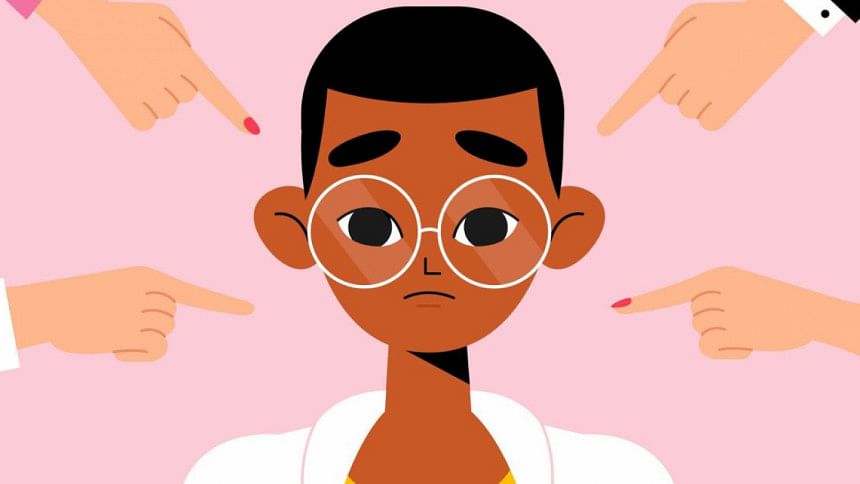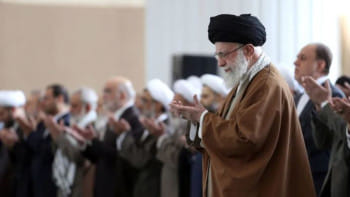Combatting colourism in Bangladesh

In Bangladesh, colourism subtly yet firmly grips society, particularly affecting young girls with darker complexions who often endure colour-based discrimination. Flourishing within a patriarchal framework, colourism perpetuates a deep-seated racial discourse, causing long-lasting psychological distress for families with darker-skinned members.
What is colourism, you ask?
Colourism persists under the shadow of racism, delicately infiltrating society. Racism and colourism, while interconnected, are not identical. Racism is systematic, underpinned by prejudice against a minority based on their ethnic heritage. For example, discriminatory attitudes or institutional practices against the Indigenous communities in Bangladesh, such as those living in the Chittagong Hill Tracts, based purely on their ethnic heritage, could be classified as racism.
Conversely, colourism operates on preferential treatment within a minority group, based on skin tones. The occurrence of this bias within a single racial or ethnic group demonstrates its complex character. In the Indian subcontinent, the prevalence of Fair & Lovely, a skin-lightening cream that was marketed for decades, is widely recognised. The marketing strategies associated with Fair & Lovely and similar products have perpetuated the notion that having lighter skin can enhance a woman's prospects for marriage, employment opportunities, and social status. This not only demonstrates the prevalence of colourism, but also reinforces the normalisation of such beliefs, thus embedding it into societal norms and expectations.
Colourism can be traced back to the era of slavery in the United States, where skin colour was a deciding factor in the allocation of duties and privileges among the enslaved. This entrenched hierarchy based on skin colour has lingered, influencing social, educational, and economic opportunities and creating a damaging legacy.
For instance, a bastion of public influence, Hollywood has a contentious history of depicting skin colour in a manner that perpetuates colourism. This manifests in the casting of lighter-skinned or "White-passing" actors in leading roles. Such an industry trend, whether intentional or inadvertent, frames perceptions of beauty, value, and worth, setting an unspoken standard that infiltrates the mindsets of audiences globally.
In communities of colour, colourism stirs discord, creating a "hierarchy" based on skin tones. The notion of "validity" or "worth" is attached to skin colour, a toxic legacy of oppressive histories that were internalised by oppressed communities and then reproduced within these communities. During the colonial era, British colonists imposed Eurocentric beauty standards that favoured lighter skin as a symbol of superiority, beauty, and purity. This notion was fortified through various means, including discriminatory practices, social rankings, and the promotion of Western beauty ideals.
In the Indian subcontinent, the prevalence of Fair & Lovely, a skin-lightening cream that was marketed for decades, is widely recognised. The marketing strategies associated with Fair & Lovely and similar products have perpetuated the notion that having lighter skin can enhance a woman's prospects for marriage, employment opportunities, and social status. This not only demonstrates the prevalence of colourism, but also reinforces the normalisation of such beliefs, thus embedding it into societal norms and expectations.
The preference for lighter skin and the marginalisation of darker-skinned individuals became ingrained in Bangalee society during the British Raj and have endured long past the end of colonial rule. The internalisation of these beliefs has led to the reproduction of colourist attitudes within the same communities, where lighter skin is seen as being more desirable, attractive, and socially acceptable.
Take Bangladesh as a case in point. Here, in the marriage process, a disconcerting scene often unfolds where panic is triggered by the "darkness" of an individual's skin. One's skin tone alone prompts the misguided assumption that darker-skinned individuals are somehow "inferior" to their lighter-skinned counterparts.
Beyond beliefs, the far-reaching influence of colourism infiltrates various sectors, including the entertainment industry and the job market. A testament to this is the booming global market of skin-lightening products. This trend underlines a deeply-rooted bias that associates lighter skin with privilege, success, desirability, and intelligence.
Even though several corporations have vowed to discontinue the sale of products blatantly marketed as "skin-whitening," these products are likely to remain accessible under subtler aliases. By employing euphemisms like "glowing," "radiant," "bright" or "clear," these products may be repackaged as wellness commodities, conveniently veiling their original intent.
An inevitable question surfaces: how do we tackle colourism? As with most societal problems, the initial step lies in education. One such initiative is the All Shades are Beautiful project. This initiative aims to raise public awareness of the harmful physical and psychological effects of colourism in Bangladesh. Its work has helped people understand the complexities of colourism and brought attention to hidden societal problems – problems that are frequently disregarded, normalised, and accepted as a part of routine life.
Projects like this can lay the groundwork for these conversations to take place publicly, and challenge the biases associated with skin colour and foster acceptance of all skin tones. Personal stories shared through such platforms can highlight the experiences of individuals facing taunts or discrimination based on their skin colour.
To facilitate open discussions and interactions, All Shades are Beautiful organises "Talk About It Tuesdays," providing participants with a platform to share their personal experiences and thoughts on colourism, among other social issues. The discussions held thus far have touched on various aspects, such as the young age at which individuals first encounter comments about their skin tones and their experiences with skin treatments aimed at achieving fairer skin. The series "Shades of Bias: Unravelling Colourism" educates viewers about the definition, historical background, and present-day effects of skin colour discrimination in Bangladesh. And lastly, "True to Complexion," an upcoming series, aims to showcase and inspire women to employ make-up techniques that enhance rather than alter their natural skin tone, challenging the prevailing cultural norm in Bangladesh.
Initiatives like these shed light on a deeply overlooked but highly prevalent form of prejudice, sparking essential conversations about the hidden concept of colourism. One hopes that such projects can be emulated. It is time for us to be better and brighter, beyond one's skin colour.
Aftab Ahmed is a Master of Public Policy candidate with the Max Bell School of Public Policy at McGill University. He can be reached at [email protected]

 For all latest news, follow The Daily Star's Google News channel.
For all latest news, follow The Daily Star's Google News channel. 








Comments